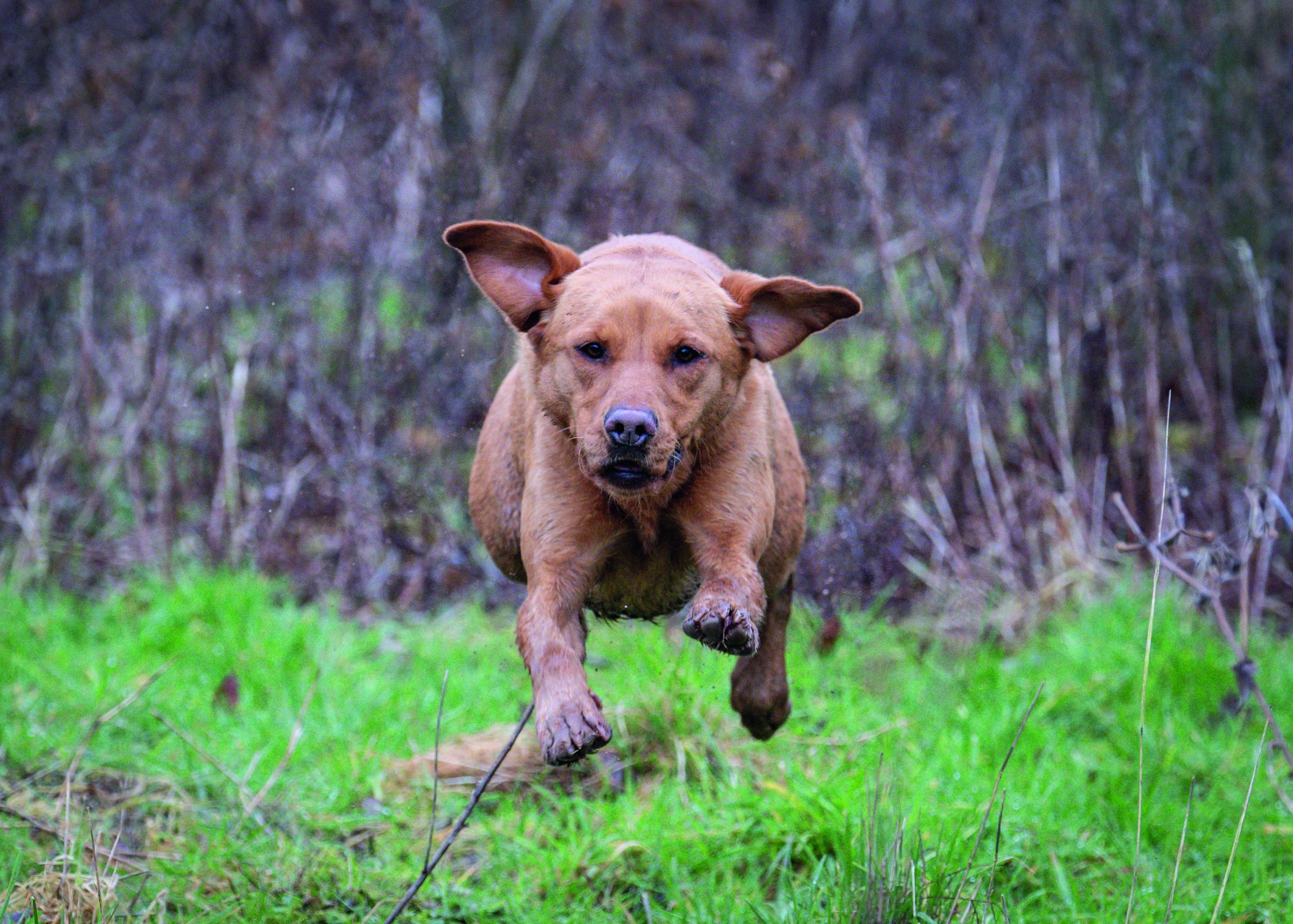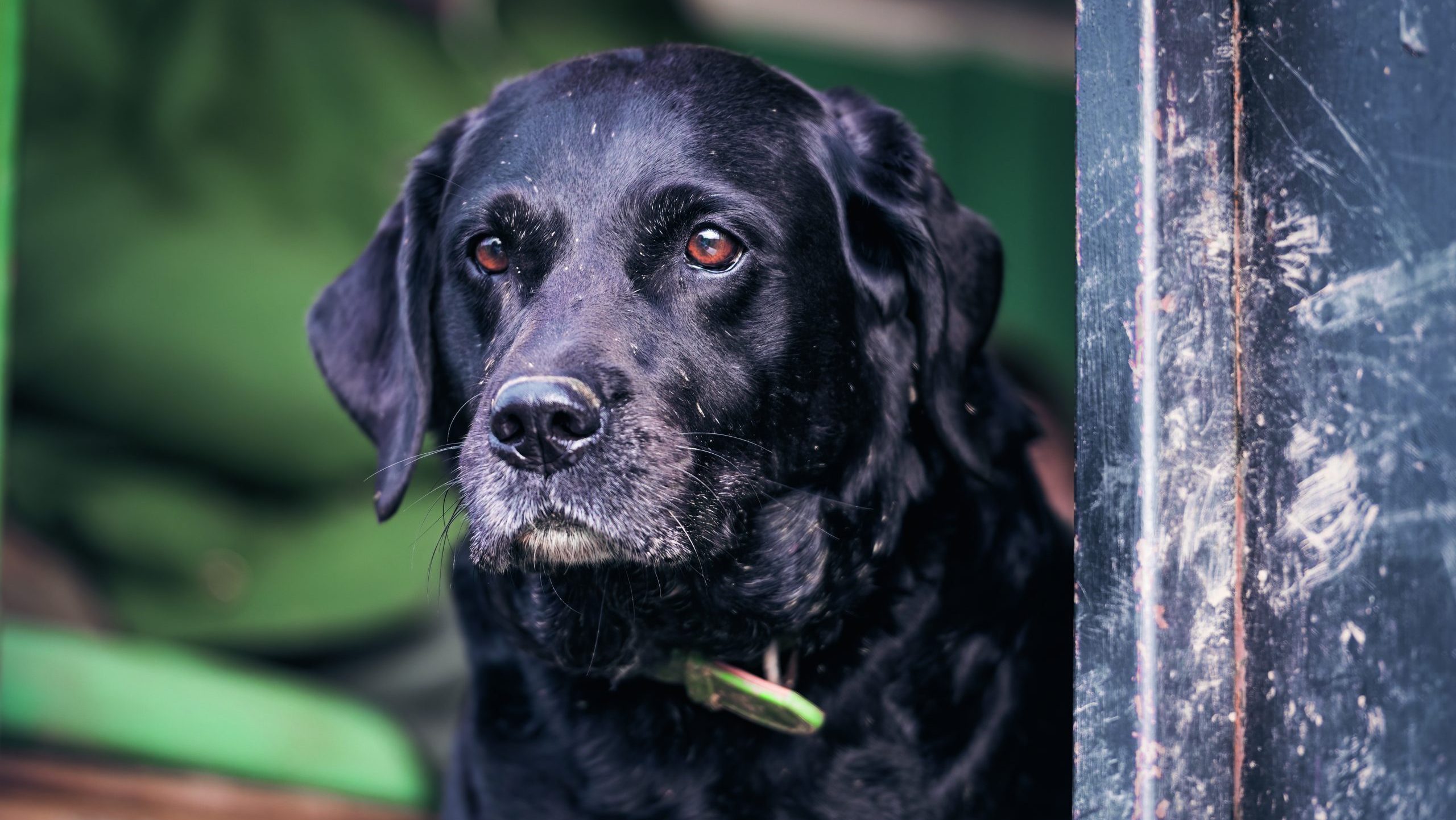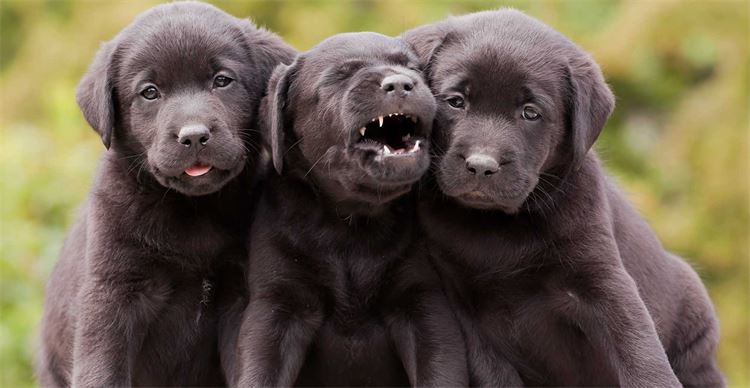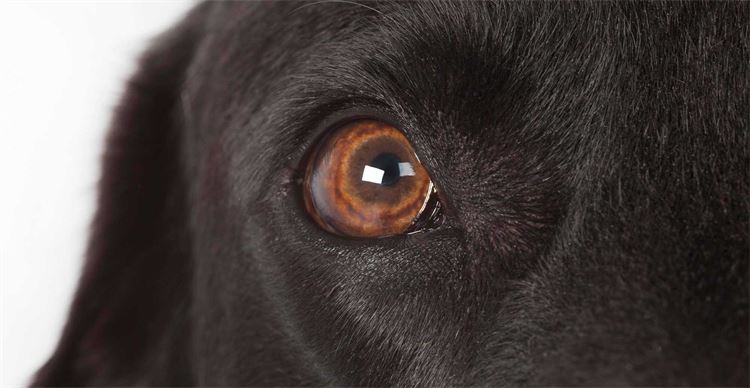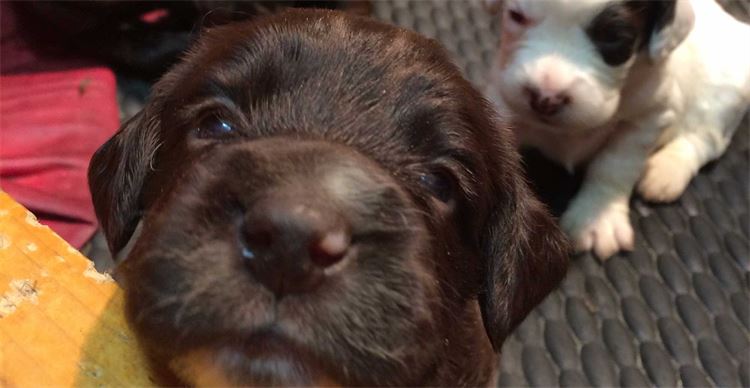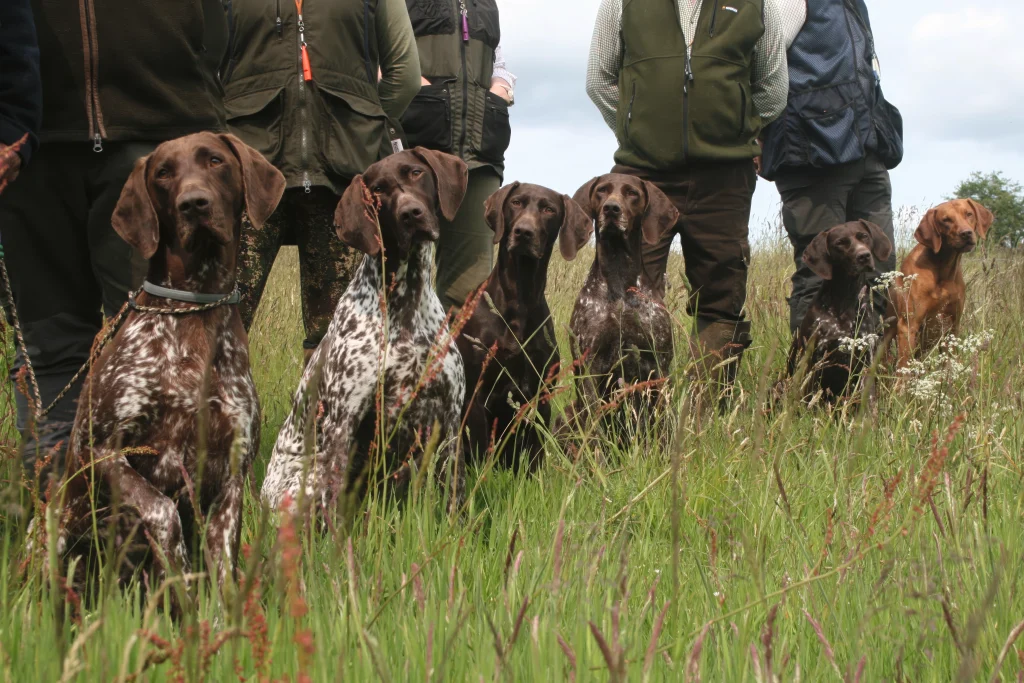Breeding masterclass
We ask four expert handlers and trainers – Richard MacNicol, Jayne Coley, Dom Goutorbe and Field Editor Ben Randall – for their advice on breeding gundogs.
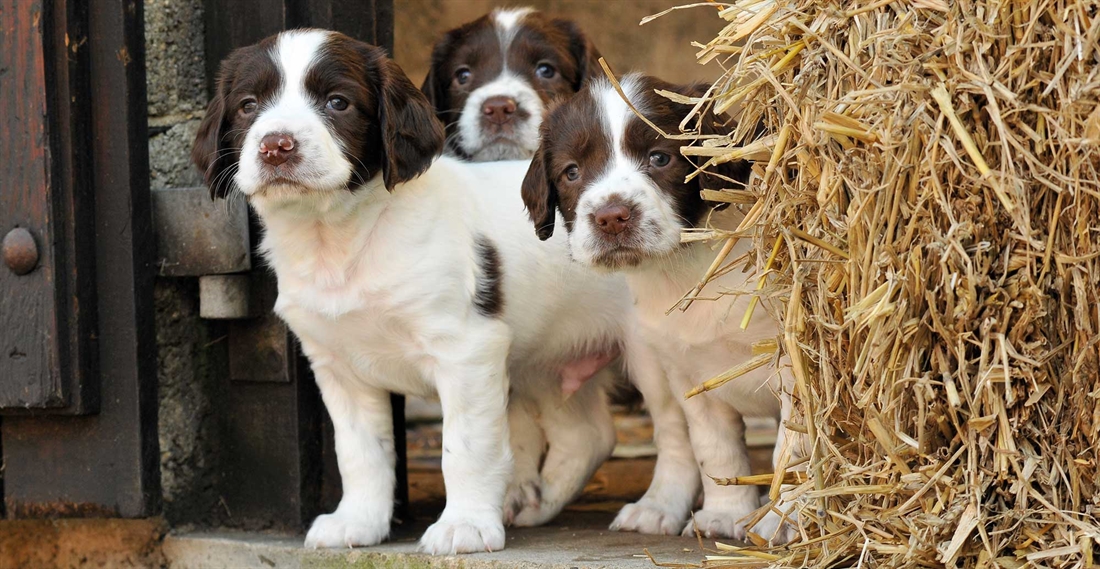
Things to consider:
Health and suitability
DOM: The health of your bitch will determine if you should breed from her. I think breeders have a moral obligation to conduct health tests – they are very accessible now. Testing requirements vary between breeds. Research them online, through breed clubs or the Kennel Club. If a bitch hasn’t had a litter before, should she be having a first litter over the age of six? The Kennel Club will not register puppies out of a bitch that is over 8 years old when they are born, except under exceptional circumstances.
Time
BEN: Be realistic and honest with yourself – have you got the time to raise a litter of pups? And does your lifestyle allow it?
DOM: Never assume your bitch will go the full 63 days before having her pups. Puppies can be born up to a week early and even a week late. You can never tell whether you will need to spend time with the bitch. Hope for the best but prepare for the worst.
Costs and complications
BEN: Are you in a position to pay vet bills if the pregnancy/whelping does not go as planned? Breeding from a dog can be costly.
DOM: If you are looking to breed in order to make money, then quite frankly don’t bother. Breeding dogs, or at least breeding dogs properly, can be very expensive. You might be unlucky and have problems with your bitch in one way or another, so it is important to have a vet you trust.
Choosing a stud dog
Health and lines
RICHARD: The breeding of top quality gundogs takes a great deal of thought and planning. Improving bloodlines and qualities does not happen by accident. I hear of many litters of pups which are not planned or indeed planned with little or no thought as to what the outcome may be.
We can follow the example of others involved with animal husbandry – farmers improving their stock, or horse breeders striving to breed their next big winner, for example. It can be a lifetime of work for many.
The two most commonly used types of breeding found today are line breeding and outcross breeding. Both have their merits.
Outcross breeding:
When a bitch is mated with an unrelated individual. This practice is usually implemented when bloodlines are becoming too close, and should also be evaluated like any other form of breeding.
Line breeding:
Line breeding involves selecting two dogs for mating who share many of the same lines. This gives the breeder an excellent idea of what the mating will result in and what the pups will be like. Through this type of selective breeding, one is striving to enhance the many qualities in the breed. By line breeding with a proven stud dog who shares a good bitch’s lines, there is a good probability that you will achieve this.
When several of the same dogs and/or kennel names feature in a pedigree, it usually shows the dog has been bred with a great deal of thought and with a knowledge of the lines. Take a look at some of the successful gundog trainers and their kennel names if you wish to study this form of breeding.
DOM: Look through a pedigree and ensure that there are not dogs featuring in there that you would not want to, but don’t be ruled by pedigrees. You will leave your breed in a far better state by opening up a gene pool.
BEN: What is the lineage like further back and how much do you know about grandparents and great grandparents? What were their strengths and weaknesses?
Temperament
DOM: Consider weaknesses, and how these can be improved through using the right stud dog, but also be mindful of any issues you have encountered with the bitch which may be passed down, too. If either dam or sire has any aggressive tendencies, you should not breed from them.
BEN: Remember dogs are made to look good by the quality of their training. I look for less experienced handlers who still do very well with a dog. If a bitch has a negative, I will look for a dog with a strength in that particular area. Talk to people who have judged the dogs at trials or who might have seen them work a lot.
Seasons
DOM: Seasons will differ from bitch to bitch or even from season to season. A bitch will typically come into season every 7–9 months, but this can vary. I don’t think there’s any need to have a litter from a bitch before she is at least two years old and fully developed.
Progesterone testing helps establish the best time for mating – I have had a bitch ready for mating on her fourth day of her season and another ready on her 26th day. The norm is that the bitch will be ready for mating from the 11th to 16th day of her season.
BEN: I recommend two matings, 48 hours apart – one mating is often sufficient, but this helps save time and money by reducing the risk of missing a mating opportunity. I always try to use an experienced stud dog. Supervision is key to ensure risk of injury is minimised. I have a kennel specifically for mating – the dogs only go in there if they are to mate. So many people meet up at service stations or on shoots. In my mind, dogs can start to get the wrong idea after a first mating if it is not controlled in this way – they might anticipate a similar situation each time they go somewhere in the car.
How?
Sit in the kennel with a stool in a corner and your back against a wall – it’s important to be comfortable. Hold the bitch between your legs, so her back-end is facing towards the dog. With a finger either side of her vulva, wait for the dog to mount the bitch and hit your hand before holding the bitch tight, keeping calm. The dog will sometimes tie with the bitch for anything from 5–50 minutes. Supervise them during this time. Once finished, pick the bitch up and carry her straight to the car.
The bitch – pregnancy and preparation
Feeding
JAYNE: Do not change the bitch’s diet for the first 7–10 days after mating. After this period, if she is on a low-protein food, it would be a good idea to gradually change her onto something with a higher protein content – around the 26 per cent mark. Do this gradually over four or five days. I feed a good quality food, twice a day. By six weeks into pregnancy, I will have gradually changed her food to that which I will eventually feed to the puppies.
Exercise
JAYNE: Exercise your bitch as normal, but don’t let her get into water, especially stagnant ponds. If she is a quiet, laid back bitch, you could take her out shooting for the first month once she is out of season, but this really does depend on how sensible she is. Be extremely careful over fences, and also when she is jumping in and out of your vehicle.
Worming
BEN: Everyone has their own way of doing it. I administer (daily) Panacur 10% from Day 40 for 25 days (until two days post birth). This is the only licensed wormer that treats giardia. It also reduces loose stools – a common problem.
The whelping environment
JAYNE: The area where your bitch whelps should be dry, clean, warm and free from draughts. I raise the whelping box slightly off the floor. A good week before she is due to whelp, I move the bitch into the whelping box and have a couple of the pig rails in so she can get used to it. (These are put in to prevent the puppies being squashed between their mother and the sides of the box).
BEN: I line the whelping box with Vetbed which can be cut to size and washed easily. I change the bedding every day and use a raised heat lamp to keep the pups warm.
Whelping: birth to weaning
JAYNE: A dog’s normal body temperature is 101–102.5ºF (38.3–39.2ºC). It will usually drop below 99ºF when whelping is imminent. I monitor the bitch’s temperature morning and night as we approach due date, advise my vet when the bitch is due to whelp, and make sure I have their emergency telephone number, just in case.
A bitch will often – but not always – go off her food about 24 hours before whelping. Following this, she will have a clear discharge, start to lick her vulva, and have contractions. She might also be very restless, and attempt to tear up the newspaper in the whelping box (I will have taken the rails and Vetbed out by this stage).
Birth
JAYNE: Keep a quiet eye on proceedings. Puppies are born in a thin membrane, which needs to be removed so the puppy does not suffocate. Most bitches will do this themselves – if not, you must break the membrane using your fingers. The bitch will start licking the puppy, which will stimulate it to breathe and cry. If she does not, rub the puppy vigorously with a wad of kitchen roll until it starts to breathe on its own, before placing it on a teat.
Keep the whelping area clean and dry. I offer the bitch water with a splash of milk, plus a little glucose (or honey), to drink in between having puppies. A small cardboard box with a hot water bottle and blankets is useful for keeping the newborn pups warm. Once the latest pup to be born is dry and suckling, I transfer the other pup(s) from the cardboard box back to their mother to feed. It’s really important that you keep calm and composed.
If the bitch is straining (having contractions) for over two hours and nothing is happening, call the vet.
When she has finished giving birth, I take the bitch outside on a lead so she can go to the toilet. I keep an eye on her in case another puppy pops out. I then replace the bedding and call the vet, who will give the bitch a jab (which helps her to expel any remaining discharge) and check the pups over.
BEN: I’d recommend marking each pup so that you can distinguish between them, weighing each one and recording their sex. I weigh them every few days thereafter to keep track of their growth – especially if it is a big litter.
Supervision
BEN: I will always supervise the birth and monitor the pups very closely during their first few weeks. I have CCTV so that I can leave the pups quietly with their mother but still keep a close eye on what’s happening.
JAYNE: I whelp my bitch indoors. If there is a small puppy, it’s easy to pop it on a teat each time when passing the box, and should a puppy get trapped behind the bitch, I will hear it cry and can swiftly rescue it.
Feeding
JAYNE: For the first few days after giving birth, I feed the bitch little and often (perhaps four times a day) with cooked chicken and fish with rice. Ensure there is always fresh water available. Once she is back on the puppy food, I feed her three good meals a day, but watch her carefully. If she has a large litter, she will need more food, if she has only a few pups, she may not need so much.
Medication
BEN: My pups receive Panacur 10% in week 2, 5 and 8. They will then have their first vaccination and be microchipped at eight weeks old, receiving a second full vet check – the first being at day three or four, when they will have their dew claws removed and (if spaniels) their tails docked.
JAYNE: Remember to keep trimming the puppies’ nails, using a small pair of ordinary nail clippers. Start doing this when they are quite young, nipping off the end of the little hook. This makes life a lot more comfortable for the bitch when they are feeding.
Weaning
JAYNE: I like to wean the puppies off the bitch when they are about five weeks old and all tucking into four meals a day. By then, the bitch will have grown used to spending less time with them.
When I take her away from the puppies, the bitch lives indoors and I keep feeling her undercarriage. If it becomes hard and hot, I take her to the puppies and let them suckle for no more than a minute, just to take the pressure off. I find if the puppies drain all the milk, she will merely fill up again.
Toilet training
JAYNE: At two weeks old, I move the pups and their mother into a kennel with a much larger whelping box. At three weeks old, I have Vetbed on two-thirds of the box, the remainder being just newspaper which the puppies learn to use as their toilet area. Once they have progressed to playing in the kennel run, I start to encourage them to come out onto lawn at the side of the kennel. They soon learn to go to the toilet on the grass. Get into a routine by calling them out onto the grass as soon as they wake up. By doing this half a dozen times a day, including when they are fed, I find they quickly become clean.
Feeding
BEN: At four weeks old, I will wean my dogs onto a good quality puppy food. The bitch will have been fed on this from three weeks before birth and will continue to be fed this for a month or more after weaning.
The puppies’ biscuits will be soaked in warm water and then put in the fridge. They will then be mashed up with a little warm water again, until they are of a porridge-like consistency. I feed the pups in a long trough. Once their noses have touched their new food I find they take to it fairly rapidly. I stick to one food that I know supports them and contains all the necessary nutrients. Swapping foods regularly can lead to loose stools, poor condition and a fussy dog.
JAYNE: Make sure there is always plenty of clean water available. And watch to ensure all the pups are getting enough food. Over-feeding is likely to cause diarrhoea. Should this occur, try halving their normal feed, mixed with boiled white pudding rice with some natural yoghurt added. If any of the puppies are lethargic, have blood in their stools, or keep vomiting, contact your vet immediately.
Socialisation
JAYNE: I spend a lot of time sitting with my puppies, getting to know each one, and handling them, etc. I give them safe things to play with and carry around. It is so important that puppies are well socialised and used to all sorts of sounds that they are likely to come across, before they go to their new homes.
BEN: I always introduce my pups to children and find this helps them adjust to family life that bit quicker.
Advertising and selling
JAYNE: It is a legal requirement that puppies are microchipped by the time they are eight weeks old. I let my puppies go to their new homes when they are 7½ to 8 weeks old. I always advise new owners to invest in a collapsible cage. They are not expensive and are very useful.
BEN: If the sire and dam are KC registered, you can pay a fee to go on the KC puppy list when you register the pups at six weeks old – a litter finding service that will help to ensure the right kind of responsible owners are reached.
DOM: Have your puppies vet checked before they leave you – that way, both you and the new owner will be happy that everything is well. By ensuring all the health tests are done, you will have a far better chance of getting good homes for pups and they are far less likely to come back to you.
Equipment check list
• Vetbed
• Whelping mats
• Heat lamp(s)
• Heat pad
• Good quality all-in-one puppy food
• Thermometer
• Small nail clippers
• Weighing scales
• Puppy wormer (seek advice from your vet)
• Plastic dishes/troughs
• Stainless steel puppy weaning bowls
• Jumbo-sized wash bag (to wash the Vetbed in your washing machine without causing any damage to the machine)
• Disposable whelping boxes are growing in popularity
Related Articles
Get the latest news delivered direct to your door
Subscribe to Gundog Journal
Unlock the full potential of your working dog with a subscription to Gundog Journal, the UK’s only dedicated magazine for gundog enthusiasts. Published bi-monthly, this authoritative resource delivers expert training advice, in-depth interviews with top trainers and veterinary guidance to help you nurture a stronger bond with your dog.
With stunning photography and thought-provoking content, Gundog Journal is your essential guide to understanding, training and celebrating your working dog.
Save 10% on shop price when you subscribe, with a choice of packages that work for you. Choose from Print & Digital or Digital only with each journal delivered directly to your door or via the app every other month, plus access to past issues with the digital back issue library.




